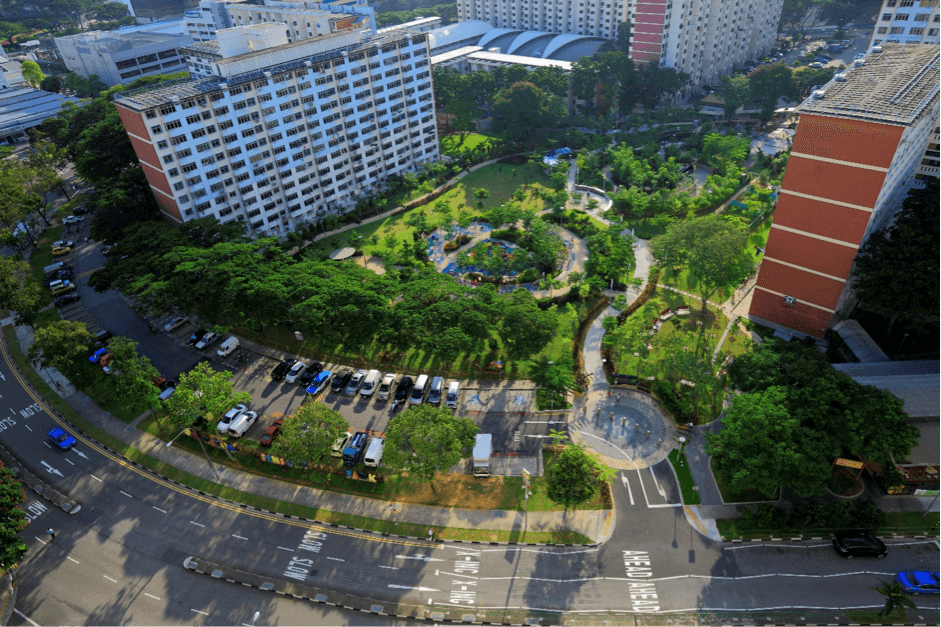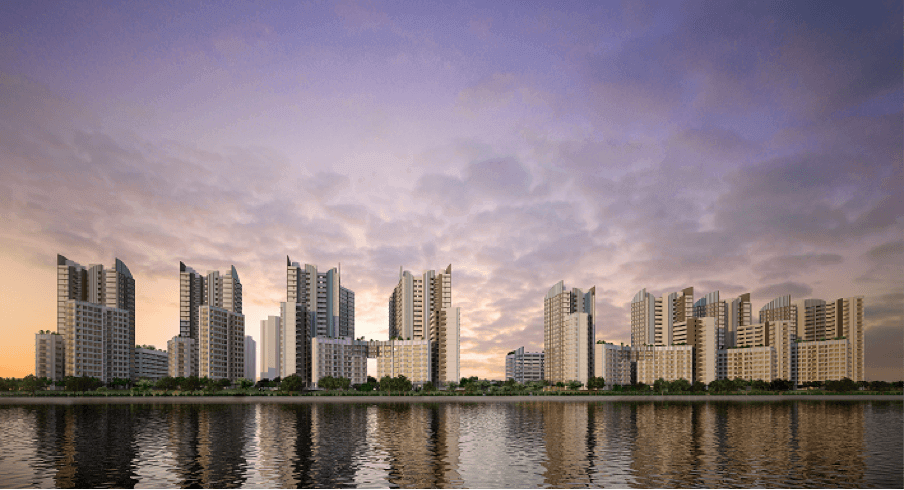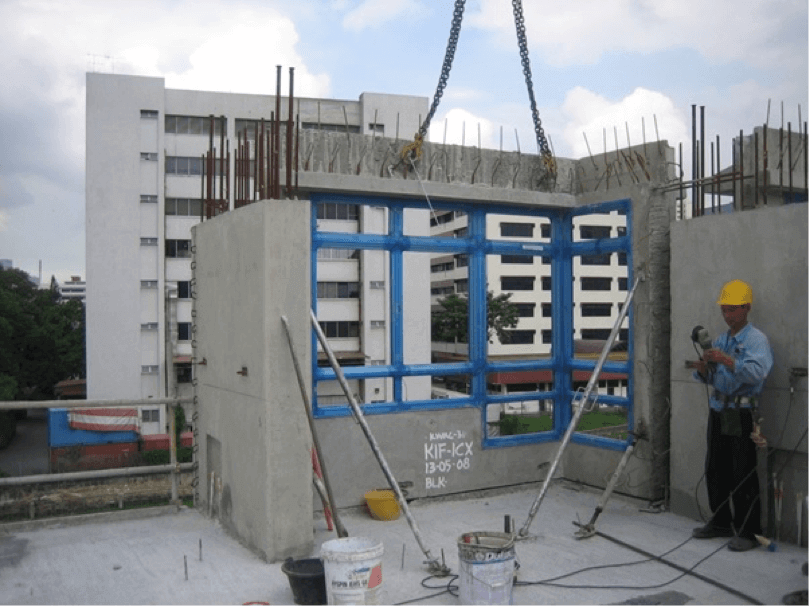A roof over your head – the key to driving modern global economies
Having a place to call home is fundamental to the success of modern society. Yet a lack of affordable urban housing is a global problem affecting low-income populations in both developed and developing nations. Can Singapore’s model lead efforts to meet this growing global challenge?
When Singapore gained its independence in 1965, the nation faced a housing crisis of epic proportions. Many people were living in unhygienic slums and squatters’ camps, and new immigrants were adding to the strain. Yet in just 5 years, this situation had been turned around with 35% of the population successfully housed in decent affordable accommodation.
Fast forward and today 82% of Singapore’s 5.6 million residents can live, work, learn, and play in modern, self-contained towns; modern affordable developments, integrating residential, retail, commercial, and public areas within walking distance of each other and to public transportation.
Globally, it is a rare achievement. While Singapore has succeeded over the last 60 years, other cities across the developed and developing world have continued to struggle when it comes to providing decent housing for their populations.
New York City, for example, the city with the most billionaires in the world, is experiencing a chronic shortage of affordable housing due to limited access to land, unaffordability, a speculative real estate market. It is a similar story in Hong Kong and across the cities of Europe, Australia, and South-East Asia; all are failing to provide affordable accommodation for their population.
UN‑Habitat, whose mission is to promote sustainable settlements and adequate shelter, defines substandard housing as dwellings that do not meet any of five basic criteria: durability of structure, sufficient living space, access to safe water, access to sanitation, and security against eviction. Depending on location and context, the cost of a home, it says, should not consume more than 30 to 50 percent of disposable household income.
Providing this decent affordable housing for growing and increasingly urbanising populations is a huge challenge that faces governments around the world. More than half the global population already lives in cities, and the figure will be two-thirds by 2050. By 2025 it thought that at least 1.6 billion people will need affordable housing.
So, does Singapore provide a model that can be globally copied? Certainly, its experience over the last half century provides many lessons.
Singapore’s affordable housing model
The driver for Singapore’s programme was the realisation that, in one of the densest cities in the world, provision of affordable housing was critical to the sustainable economic success of the nation. It is a message that is now increasingly being understood in other major cities around the globe.
The model was simple. Singapore’s Housing Development Board was set up in 1960 as the sole independent government agency in charge of planning and executing the housing program. It quickly earned a good reputation for creating self-sustaining, high-rise town-planning designs, complete with social and commercial amenities and efficient public transport. It continues to be highly regarded for its innovative planning and design.
An important goal of the HDB was to push home ownership and, in 1964, the Home Ownership for the People Scheme was introduced to give citizens a greater stake in the country. For the program to succeed, land had to be acquired, homes had to be built at a reasonable cost, and people needed to be able to own them.
To solve the first problem—particularly acute in a land-scarce city-state like Singapore – the 1967 Land Acquisition Act empowered government to acquire private land at market prices.
The scheme was given a boost in 1968 when residents were permitted to use the Central Provident Fund (CPF) – a compulsory pension saving plan for every working Singaporean – as capital against which to borrow money to buy their homes. This helped tether Singaporeans to the dream of a more equitable future and was core to creating national pride and identity.
As a result, throughout the decades that followed, public and private investment has seen construction of vast new high density public housing communities, optimising scarce land resources and providing a total living environment with self-contained educational, social and community facilities.
Renewal programmes have followed, ensuring that the housing stock is well maintained, with social, commercial, transit, and recreational facilities readily available. So well, in fact, that, in 2010, Singapore’s Housing and Development Board (HDB) won the UN-Habitat Scroll of Honour Award for “providing one of Asia ‘s and the world’s greenest, cleanest, and most socially conscious housing programs.”
Defining decent affordable housing
There are many definitions of affordable housing. At its simplest, the term refers to housing units that anyone, with a household income below the median, can afford to rent or buy. Usually public sector driven, the affordable housing programme stimulates and usually acts to moderate the private housing market.
For example, the City of Vienna built a huge system of housing after World War I and provides 400 million euros annually to maintain it. The city owns nearly 25% of the housing stock and is actively involved in another 20%. The result is that, with so much of the city’s total housing stock is city-owned or subsidized, private landlords are forced to compete with social housing for the same tenants, and cannot afford to inflate rents.
To be classed as decent accommodation, dwellings should conform to a series of minimal standards – floor-area per person, basic amenities, adequate heating, plumbing, and electrical systems. Critically, it should also be free from damage or structural defects such as broken windows, leaks, or cracks, that could be harmful to the health of residents.
Ideally, centers of employment must be within reasonable commuting distance – usually a maximum of one hour away. School and health facilities also must be within short distance, which will vary according to location.
By fulfilling this basic human need for shelter, affordable housing contributes to the wellbeing of both parents and children. Studies show that children in stable housing do better in school and are less likely to experience disruption in their education due to unwanted moves.
Overall such decent accommodation and a stable home life reduces stress, toxins, infectious disease, and leads to improvement in both physical and mental health. Families’ tight budgets are freed up to spend on health care and food, with studies demonstrating how children whose parents receive housing assistance benefit from better nutrition.

Affordable housing as the driver for global economy
Affordable housing is critical to the success of families, communities and is increasingly vital to the sustainability of local, regional, and national economies. Public investment to create and foster this community, bringing together residential, commercial, and social amenities, is critical to sustaining modern urban life and can also help to stimulate economic growth.
Helping to attract and retain employees to the community creates a selling point and competitive advantage for employers and enables the workforce to live close to their jobs. Shorter commutes allow workers to spend more time with their families, boosting productivity while the community benefits from reduction in traffic congestion, air pollution, and expenditures on roads.
Surbana Jurong has been at the heart of Singapore’s affordable housing programme since it was formed in 2003 by corporatizing the building and development arm of HDB. Together with HDB, it has helped implement 26 successful townships occupying some 25% of Singapore’s land. The developments are high rise urban living green, clean and organised, modern and integrated into the transport system.
It is a model that the firm’s experienced team of planners, project & development managers, architects, engineers, and quantity surveyors have exported beyond Singapore. A comprehensive one-stop housing solution has enabled both private developers and public housing authorities to create large scale housing projects in China, India, Malaysia, Myanmar, and Brunei.
In each case, these states have recognised that replicating this healthy mix of housing options, from market-rate and affordable rental housing, single-family homes, duplexes, and developments for seniors, ensures opportunities for all individuals to improve their economic situation and contribute to their communities.
Unlocking the global affordable housing opportunity
Clearly the issues and drivers surrounding the provision of affordable housing around the world are diverse. It is not always straightforward or even possible to transplant the Singapore model in many parts of the world. However, there are many common core issues on which to focus when seeking solutions.
Land Supply: Finding land in an appropriate location is the most critical step in developing successful affordable housing schemes. Indeed, if the decision about land is wrong, affordable housing projects cannot succeed, no matter how well construction, operations, and financing are managed. Land cost is often the single biggest factor in the economics of affordable housing development – it is not uncommon for land costs to exceed 40 percent of total property prices, and in some large cities, in highly land scarce urban areas, land can be as much as 80 percent of property cost. Where land is available at a lower price—on the far fringes of the city—housing projects may fail due to lack of infrastructure or excessive commute times.
Financing: Financing routes have a significant impact on the affordability of housing – both for home buyers and for developers. While access to finance for low-income households can be improved in advanced economies, it is a challenge in developing economies where financial systems are not as well developed and many low-income citizens are “unbanked” and work informally. As part of housing-finance policy, housing rentals should be considered as part of the housing solution.
Planning and design: Sustainable urban planning and design, with a combination of residential, commercial, educational, and civic space, is critical to fostering a sense of physical and social community. Getting it right provides connectivity and context that works with the community’s natural beauty, along with easy access to transportation and social infrastructure; minimizing the use of cars, maximising the sense security and privacy.
Construction: Most countries have been slow to improve construction productivity due to the lack of technical resources and low labour costs. However, ideas such as value engineering and efficient procurement, as well as adoption of industrial approaches such as use of prefabricated components. Together with modern construction management techniques, this can bring huge potential savings in cost, time and significantly improve the quality. Such ideas make the economics of affordable housing more attractive and encourage developers as well as builders to think beyond housing for mid- and high-income consumers.
Maintenance: Beyond construction of housing, good maintenance is required to avoid dilapidation and help preserve housing stock. Good maintenance starts during planning and design to incorporate material with good life-cycle value to designs which allows easy maintenance. Subsequently, resources need to be dedicated for maintenance. Legislation to provide for resource in the form of contributions to maintenance expense and to enforce maintenance work has been successfully implemented in Singapore. For example, HDB flats look presentable is that cyclic repainting works has been legislated. To maintain and extend the value of property, older developments and units should be periodically upgraded. Hence maintenance need to be incorporated into the overall housing strategy
Policy and management: Affordable housing programs will not succeed without clear governance and implementation for both the short and long terms. Furthermore, human capital is an important factor in housing management. The right legal, technological, research, and statistical expertise must be in place within the different departments and branches of the housing agency, with efficient and transparent policies that institutional support can implement, monitor, and assess.
Developing modern delivery models
While the Singapore housing model relies largely on public sector support, several other development models are available and utilised around the world:

Consumer-led delivery: Consumers arrange to construct their own homes, requiring individuals with little knowledge to navigate an opaque and fragmented construction industry. Yet this is a common way in which families obtain housing in many places. Government can improve the odds of success for consumers by providing benchmarking information and technical assistance – letting households know how much materials and labor should cost and providing advice on how to write and enforce contracts and manage timetables.
Incentivised private development: Private developers receive financial and non-financial incentives to build affordable housing, which is sold to consumers, purchased by the government for allocation to citizens, or operated as rental property. The government determines what incentives are appropriate and which land qualifies for such incentives. It also ensures that developers fulfil their commitments.
Public-private partnerships: The public sector is an active partner with the private developer, rather than a passive, regulatory actor. Private developers may be given public land to be developed. The finished units are sold directly to homeowners by the private developer or are allocated to buyers or renters by the government. The structure of the partnership is set up to allocate the risks along the affordable housing value chain to the most natural owner.
The future of affordable housing
Public housing in Singapore has entered a new phase of its evolution, with housing options are being developed to cater to different segments of society, lifestyle preferences and budgets. For example, studio apartments have been developed specifically to cater for an ageing population.
At the same time, it is now understood that designs must be sustainable to ensure that homes are fit to meet the needs of the future. The Treelodge@Punggol, HDB’s 1st eco-precinct, Punggol Waterfront Housing and Dawson projects are landmark developments that combine stylish designs with environmentally-friendly features.
Increasingly we are also seeing existing affordable housing estates being refurbished and regenerated to accommodate changing community needs as they strive to meet Singapore’s vision to become a nation of home owners. As is seen increasingly around the world, modern design and construction technology will be at the heart of Singapore’s future built environment; the use of Virtual Design Construction (VDC) for planning and design, Prefabricated Prefinished Volumetric Construction (PPVC) for construction, and smart sensor technologies to boost operational efficiencies of estates.

Conclusion
The affordable housing model developed by Singapore is admired by many. However, it would be hard to simply replicate the ideas behind this success in all parts of the world.
For example, sizable public land in Singapore has been dedicated for public housing, which limits the income that the Singapore government can earn from land sales. By contrast, in Hong Kong, the government earns much revenue from land sales as a form of taxation making it very difficult to adopt Singapore’s model.
That said, many aspects of Singapore’s model, such as providing a total quality living environment, integrated towns, emphasis on sustainability, use of optimal construction technologies for quality and productivity can be replicated and adapted to the local social, economic, and environmental circumstances elsewhere around the world.
The key is to be pragmatic on what can be adopted. This would depend on what which can reasonably be controlled and what resources are available. That means first understanding the circumstances of the market, working out solutions and then decide on how to implement these solutions.
Perspectives, developed by SJ Academy, is our platform to explore new ways of tackling some of today’s most complex challenges. We draw on ideas and opinions from our staff associates and experts across different businesses. Click here to read more about Technology & Innovation, Infrastructure & Connectivity, and Design Leadership.



 下载文件
下载文件
0 comments